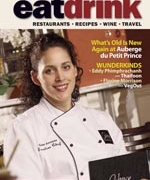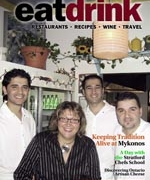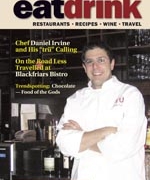Very Expensive Wine
Until reading Benjamin Wallace’s book, The Billionaire’s Vinegar: The Mystery of the World’s Most Expensive Bottle of Wine, I had no idea that a story about a single bottle of wine could turn into an enthralling page-turner reminiscent of a Sherlock Holmes mystery. The bottle in question is a 1787 Chateau Lafite Bordeaux supposedly owned and engraved by Thomas Jefferson and bought for the collection of publishing maven, Malcolm Forbes, for $156,000 at a Christie’s auction in 1985. The controversy continues to this day with winemakers, connoisseurs, collectors, auctioneers, tycoons, and FBI agents, and the sale of this bottle has had devastating implications to the wine world at large. Not only did the auctioning of this bottle interest wine aficionados, but also American history buffs, and it “was comparable to the first edition of an old book; it was an esoteric object that would likely draw a free-spending fanatic or two.” And that it did.
Even in the playground of billionaire collectors, the question arises as to how someone could spend so much on an item that should, in theory, be purchased for its temporariness and its destiny of being consumed. Mainly a collector of art, Forbes “didn’t consider the 1787 Lafite a bottle of wine so much as a historical artefact” (73). A bit of a slap in the face for wine lovers, but auction houses intended to draw in crowds by marketing wine as rare commodities: the bottles themselves were works of art and the contents inside were valuable elixirs (even if never drunk). Wallace writes: “Inert antiques were all very well, but there was magic in old wine – a mysterious and wonderful alchemy in something that could live and change from two hundred years and still be drinkable.” The trend started by Christie’s in the 1980’s continues today, even amid controversy and criminal investigations. A further example of this extravagance is the 18,000-bottle wine cellar of theatrical composer, Andrew Lloyd Webber, sold for $6 million by Sotheby’s in 1997.
Given such astronomical sums of money, it is no surprise that the authenticity of wine often comes into question. Wherever expensive things are valued, there are bound to be forgeries and “wine was among the easiest collectibles to fake. As a luxury commodity … a bottle of fine wine wasn’t carefully tracked in its peregrinations.” Robert Parker, an American wine critic, says in the book, “This is the only product in the world that you can sell for thousands of dollars without a certificate of origin.” So where does value come from? Michael Broadbent, head wine auctioneer of Christie’s, helped to develop a wine vocabulary commonly used in the business which includes provenance (the history of a wine’s custody since its creation) and ullage (the space between the base of the cork and the surface of the wine that grows as wine evaporates over time). Auctioneers emphasize these attributes, along with age and rarity of the wine itself, as well as the pristine condition of the label, the storage of the bottle, and the age of the glass used for making the bottle. Bottle size is also a factor; aside from standard wine bottles, most people are familiar with magnums (equivalent of two bottles) and double magnums (four bottles). But there are also lesser-known sizes, such as Salamancas (twelve bottles) and Nebuchadnezzers (twenty bottles). Simply based on the sheer volume of wine inside, these large bottles bump up the price and “collectors loved these – for their rarity, for their drama, and for the fact that wine aged more slowly in them.”
At auctions, “as wine became detached from its traditional role as a table beverage – as it became a fetish or a trophy or an investment – it became more common to find private collections of wine that far exceeded their owners’ abilities to drink them.” With this fetish, something other than monetary value arose, a term that Jefferson himself alluded to when he wrote that “things acquire a superstitious value, because of their connection with particular persons.” It was this “imaginary value” that piqued Forbes’ interest in the Lafite bottle which was found amongst a stash of unclaimed bottles in Paris that were supposedly owned by Jefferson. So the mystery ensues. Authentic or not, it still stands as the single most expensive bottle of wine in the Guinness Book of World Records.








